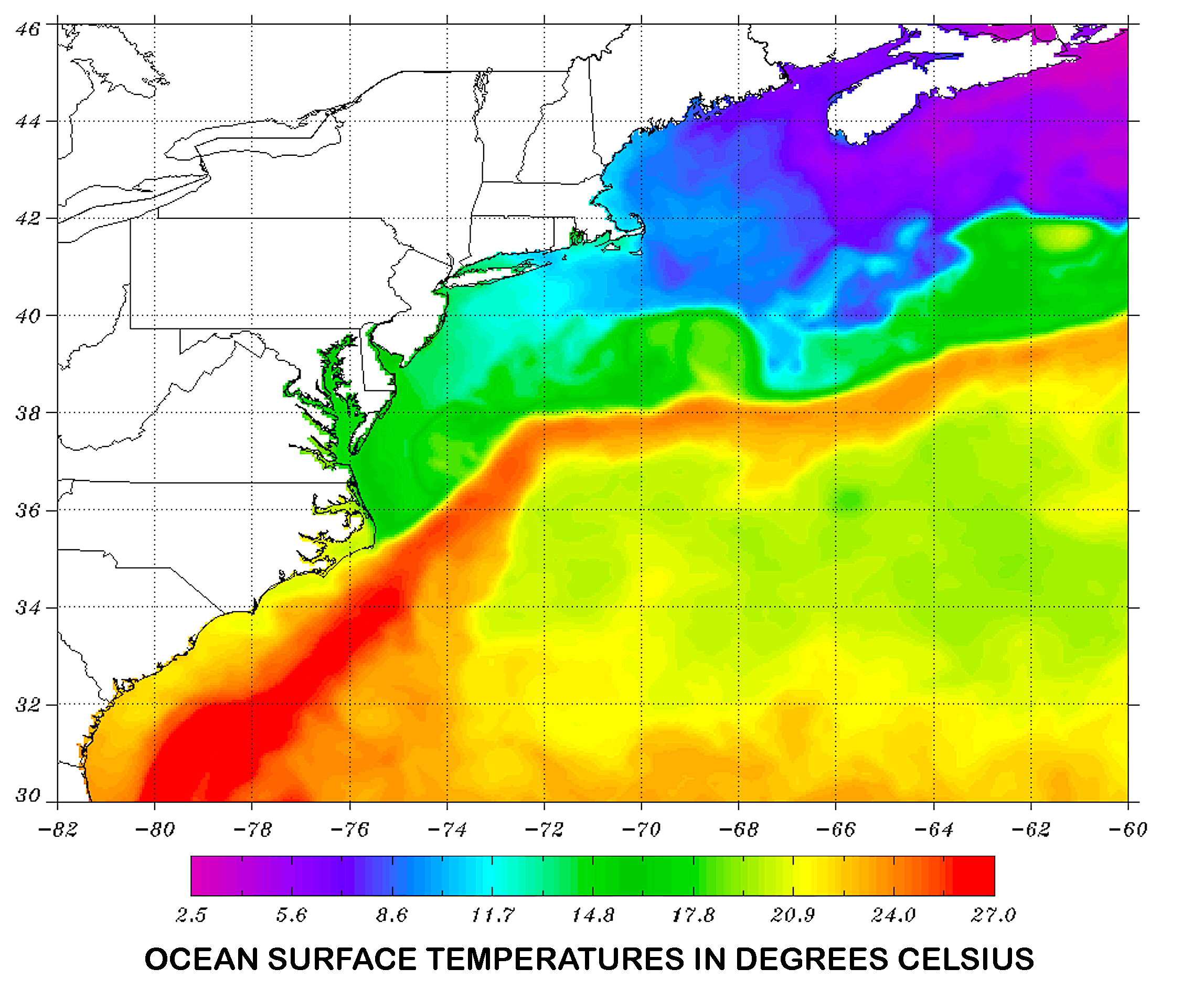Are Fish Leaving Warming Waters?

Rising ocean temperatures are forcing many species to abandon their territories.
Research Need
Estuaries — places of transition from land to sea, where freshwater from rivers and streams mixes with salt water from the ocean — are particularly vulnerable to the impacts of climate change, due to changes in water temperatures, rainfall, and sea level. Estuaries serve as nurseries, providing habitat for small fish and shellfish to develop.
A growing body of science shows higher sea temperatures impact many fish traits. Scientists want to understand better how estuarine fish have changed in the North Atlantic and Gulf of Mexico estuaries and what forces drive change.
What did they study?
A research team compiled fisheries data — from 1981 to 2018, for 54 estuaries from the Gulf of Maine to the Gulf of Mexico — that had information that could account for trends five years or longer. In total, the team analyzed 90,563 survey samples of 514 species and 31,791,126 individual fish.
The scientists explored whether there was a connection between fish and changes in sea surface temperatures, precipitation, and latitude, as well as changes in land cover adjacent to water. They looked at trends coastwide, as well as by northern and southern regions.
What did they find?
The team determined that in many of the estuaries, there has been an increase in turnover, numbers of species, and numbers of fish over time.
When sea surface temperature was more than 1.8°F higher than usual, the turnover was about 2% greater, number of species was 19% greater, and overall number of fish was 148% greater. Observed increases occurred mainly in the northern estuaries where such sea surface temperature anomalies had occurred for consecutive years — in some cases up to 5 years.
Anything else?
For the species that showed an expansion of their home ranges, the research team did not find any pattern among the species as it relates to where they occurred in the food chain.
There is a strong indication that species are expanding their ranges but not necessarily in one direction. Human activities can affect a given species’ range, especially in the southern region, where the climate allows for year-round activities. For instance, we know that activities such as fishing and boating influence fish diversity and composition.
So what?
The number of fish species, population abundance, and turnover have increased in North Atlantic and Gulf of Mexico estuaries in the last 30 years, largely due to anomalies in sea surface temperature, especially in more northern estuaries where warming has been relatively pronounced. This study addresses natural resource managers’ need for tools to predict how shifting fish communities might influence food webs, ecosystem stability, and human resources.
Reading
Oke, T.A., Zhang, S.Y., Keyser, S.R., and Yeager, L.A. 2022. “Sea-surface temperature anomalies mediate changes in fish richness and abundance in Atlantic and Gulf of Mexico estuaries,” Journal of Biogeography, 49:1609–1617. DOI: 10.1111/jbi.14451
This study was funded by the National Science Foundation (1926391, 1926395).
By Sara Mirabilio.
The text from Hook, Line & Science is available to reprint and republish at no cost, but only in its entirety and with this attribution: Hook, Line & Science, courtesy of Scott Baker and Sara Mirabilio, North Carolina Sea Grant.
- Categories:



